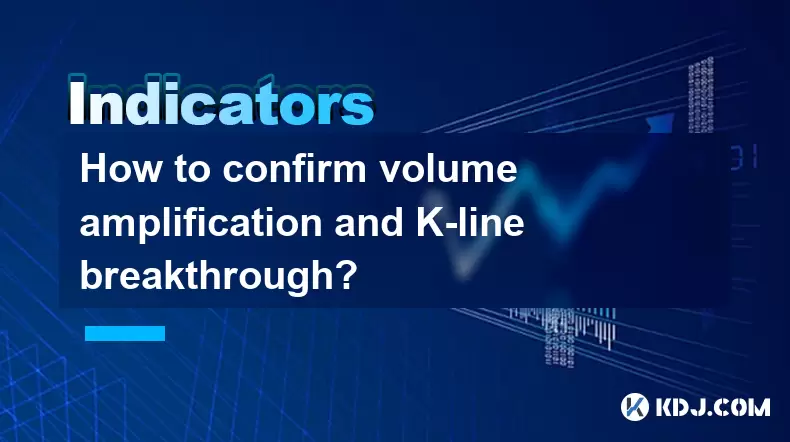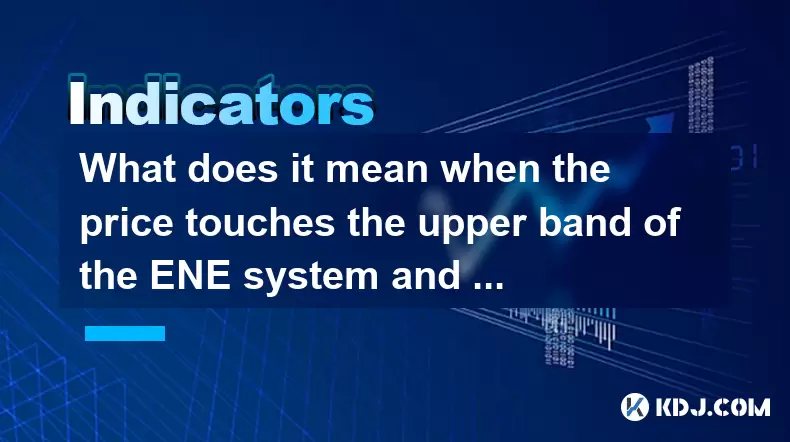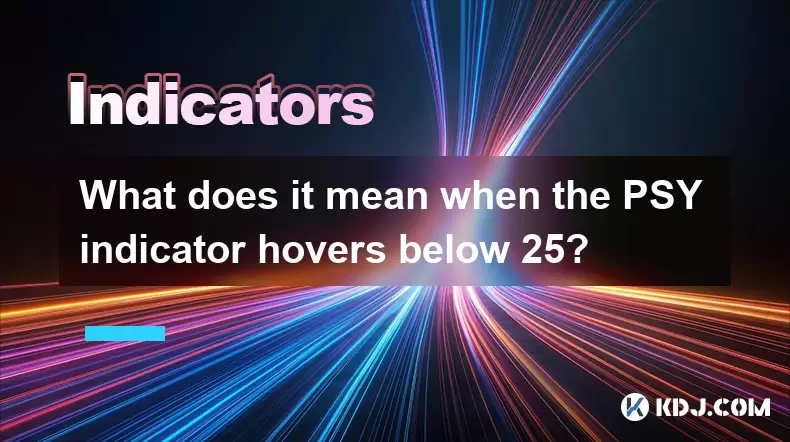-
 Bitcoin
Bitcoin $116700
0.13% -
 Ethereum
Ethereum $4229
5.18% -
 XRP
XRP $3.290
0.28% -
 Tether USDt
Tether USDt $1.000
0.01% -
 BNB
BNB $804.4
1.46% -
 Solana
Solana $181.3
1.92% -
 USDC
USDC $1.000
0.02% -
 Dogecoin
Dogecoin $0.2453
8.11% -
 TRON
TRON $0.3359
-0.82% -
 Cardano
Cardano $0.8187
2.71% -
 Hyperliquid
Hyperliquid $43.56
6.46% -
 Chainlink
Chainlink $21.22
9.48% -
 Stellar
Stellar $0.4533
0.95% -
 Sui
Sui $3.948
2.90% -
 Bitcoin Cash
Bitcoin Cash $571.0
-2.75% -
 Hedera
Hedera $0.2657
1.33% -
 Avalanche
Avalanche $24.32
2.80% -
 Ethena USDe
Ethena USDe $1.001
0.02% -
 Litecoin
Litecoin $122.2
-0.70% -
 Toncoin
Toncoin $3.440
1.95% -
 UNUS SED LEO
UNUS SED LEO $8.978
-0.09% -
 Shiba Inu
Shiba Inu $0.00001385
5.32% -
 Uniswap
Uniswap $10.94
0.24% -
 Polkadot
Polkadot $4.116
3.88% -
 Dai
Dai $1.000
0.00% -
 Pepe
Pepe $0.00001233
5.82% -
 Bitget Token
Bitget Token $4.511
0.53% -
 Cronos
Cronos $0.1572
2.50% -
 Monero
Monero $272.0
-1.82% -
 Ethena
Ethena $0.7563
17.60%
How to confirm volume amplification and K-line breakthrough?
To make informed crypto trades, confirm volume amplification by comparing current to historical volumes, and validate K-line breakthroughs with increased volume at key levels.
Jun 03, 2025 at 04:21 am

In the world of cryptocurrency trading, understanding how to confirm volume amplification and K-line breakthroughs is crucial for making informed trading decisions. Volume amplification refers to a significant increase in trading volume, which often signals strong market interest and potential price movements. K-line breakthroughs involve a price surpassing a key resistance or support level, indicating a potential shift in market trends. This article will guide you through the process of confirming these indicators, ensuring you can leverage them effectively in your trading strategies.
Understanding Volume Amplification
Volume amplification is a key indicator that traders use to gauge the strength of a price movement. When the trading volume increases significantly, it suggests that more traders are participating in the market, which can lead to more pronounced price movements. To confirm volume amplification, you need to compare the current trading volume with historical volumes.
- Identify the baseline volume: Look at the average trading volume over a specific period, such as the past 30 days. This will give you a baseline to compare against.
- Monitor for spikes: Pay attention to any sudden increases in volume. A volume spike that is significantly higher than the baseline volume indicates amplification.
- Confirm with price action: Ensure that the volume spike coincides with a notable price movement. If the price moves significantly alongside the volume increase, it confirms the volume amplification.
Analyzing K-line Breakthroughs
K-line breakthroughs occur when the price of a cryptocurrency moves above a resistance level or below a support level. This movement can signal the start of a new trend. To confirm a K-line breakthrough, you need to observe the price action and volume closely.
- Identify key levels: Determine the key resistance and support levels by looking at historical price data. These levels are where the price has previously struggled to move past.
- Watch for the breakthrough: Monitor the price as it approaches these levels. A K-line breakthrough is confirmed when the price closes above a resistance level or below a support level.
- Validate with volume: A true breakthrough should be accompanied by increased trading volume. If the volume is not significantly higher, the breakthrough might be false and short-lived.
Combining Volume Amplification and K-line Breakthroughs
For the most reliable trading signals, it's essential to combine volume amplification with K-line breakthroughs. When both indicators align, the likelihood of a sustainable price movement increases.
- Observe simultaneous occurrence: Look for instances where a K-line breakthrough happens at the same time as a volume spike. This simultaneous occurrence strengthens the signal.
- Evaluate the strength: Assess the strength of the volume spike and the clarity of the K-line breakthrough. Stronger signals are more likely to lead to significant price movements.
- Use additional indicators: Consider using other technical indicators, such as moving averages or RSI, to further validate the signals provided by volume amplification and K-line breakthroughs.
Practical Steps to Confirm Volume Amplification and K-line Breakthroughs
To put these concepts into practice, follow these detailed steps:
- Set up your trading platform: Ensure your trading platform displays both price and volume data clearly. Most platforms allow you to customize the charts to show volume bars alongside the price action.
- Select a time frame: Choose a time frame that aligns with your trading strategy. For short-term trading, you might use 15-minute or 1-hour charts, while long-term investors might prefer daily or weekly charts.
- Mark key levels: Use drawing tools to mark resistance and support levels on your chart. These levels will serve as reference points for potential breakthroughs.
- Monitor for volume spikes: Keep an eye on the volume bars. When you see a significant increase in volume, mark it on your chart.
- Track price movements: Watch the price as it approaches the marked levels. If the price closes above a resistance or below a support level, and this coincides with a volume spike, you have a confirmed signal.
- Take action: Based on the confirmed signals, you can decide whether to enter or exit a trade. Always consider other factors, such as market sentiment and news, before making a decision.
Using Technical Analysis Tools
Technical analysis tools can enhance your ability to confirm volume amplification and K-line breakthroughs. Here are some tools you might find useful:
- Volume indicators: Tools like the Volume Weighted Average Price (VWAP) or the On-Balance Volume (OBV) can provide additional insights into volume trends.
- Chart patterns: Recognizing patterns such as head and shoulders, double tops, or triangles can help you anticipate potential breakthroughs.
- Moving averages: Using moving averages can help smooth out price data and highlight trends, making it easier to spot breakthroughs.
- RSI and MACD: These momentum indicators can help confirm the strength of a price movement and validate breakthroughs.
Case Studies: Real-World Examples
To illustrate how to confirm volume amplification and K-line breakthroughs, let's look at a couple of real-world examples from the cryptocurrency market.
- Example 1: Bitcoin Breakthrough: In early 2021, Bitcoin experienced a significant K-line breakthrough above the $40,000 resistance level. This breakthrough was accompanied by a massive volume spike, confirming the strength of the move. Traders who recognized this signal could have entered long positions and benefited from the subsequent price surge.
- Example 2: Ethereum Volume Amplification: Later that year, Ethereum saw a volume amplification event when it approached the $3,000 resistance level. The increased volume, combined with a clear K-line breakthrough, signaled a strong bullish trend. This allowed traders to capitalize on the upward momentum.
Frequently Asked Questions
Q: Can volume amplification occur without a K-line breakthrough?
A: Yes, volume amplification can occur without a K-line breakthrough. This might happen during periods of high market volatility or when there is significant news affecting a cryptocurrency. However, for the most reliable trading signals, it's best to look for both indicators to align.
Q: How can I differentiate between a false and a true K-line breakthrough?
A: A true K-line breakthrough is typically accompanied by a significant increase in volume and a sustained price movement beyond the key level. A false breakthrough might see the price briefly surpass the level but then quickly reverse, often with lower volume. Monitoring the volume and subsequent price action can help you differentiate between the two.
Q: Are there specific time frames that are more effective for confirming volume amplification and K-line breakthroughs?
A: The effectiveness of different time frames depends on your trading strategy. Short-term traders might find 15-minute or 1-hour charts more useful, while long-term investors might prefer daily or weekly charts. The key is to choose a time frame that aligns with your trading goals and allows you to spot these indicators clearly.
Q: Can these indicators be used for all cryptocurrencies, or are they more effective for certain types?
A: Volume amplification and K-line breakthroughs can be used for all cryptocurrencies. However, they might be more effective for cryptocurrencies with higher liquidity and trading volumes, such as Bitcoin and Ethereum. For less liquid cryptocurrencies, these indicators might be less reliable due to lower trading activity.
Disclaimer:info@kdj.com
The information provided is not trading advice. kdj.com does not assume any responsibility for any investments made based on the information provided in this article. Cryptocurrencies are highly volatile and it is highly recommended that you invest with caution after thorough research!
If you believe that the content used on this website infringes your copyright, please contact us immediately (info@kdj.com) and we will delete it promptly.
- Trump, Crypto Vehicle, and WLFI Tokens: A New York Minute on the Latest Buzz
- 2025-08-10 00:30:12
- Wheat Penny Fortune: Unearthing Valuable Coins in Your Pocket Change
- 2025-08-10 00:35:19
- Dogecoin, PENGU, and Remittix: A New York Minute in Crypto
- 2025-08-10 01:10:12
- Ozark AI: Investment Opportunities and Analyst Projections for 2025
- 2025-08-10 01:15:17
- Cryptocurrencies 2025: Top Buys and Market Predictions
- 2025-08-10 01:20:12
- Pendle's Price Jump: Riding the Wave of Market Sentiment
- 2025-08-10 01:25:11
Related knowledge

What does it mean when the price is trading above the SAR indicator but the red dots are densely packed?
Aug 09,2025 at 11:49pm
Understanding the SAR Indicator and Its Visual SignalsThe SAR (Parabolic Stop and Reverse) indicator is a technical analysis tool used primarily to de...

What does it mean when the MACD histogram continues to shorten but the price reaches a new high?
Aug 09,2025 at 09:29pm
Understanding the MACD Histogram and Its ComponentsThe MACD (Moving Average Convergence Divergence) indicator is a widely used technical analysis tool...

What does it mean when the Triple Moving Average (TRIX) turns downward but the price doesn't fall?
Aug 09,2025 at 12:42pm
Understanding the Triple Moving Average (TRIX) IndicatorThe Triple Moving Average, commonly known as TRIX, is a momentum oscillator designed to filter...

What does it mean when the price touches the upper band of the ENE system and then falls back?
Aug 10,2025 at 12:42am
Understanding the ENE Indicator StructureThe ENE (Envelope) indicator is a technical analysis tool used in cryptocurrency trading to identify potentia...

What does it mean when the Williams' oscillator repeatedly hits bottoms but fails to rebound?
Aug 09,2025 at 09:28am
Understanding the Williams %R OscillatorThe Williams %R oscillator, developed by Larry Williams, is a momentum indicator used in technical analysis to...

What does it mean when the PSY indicator hovers below 25?
Aug 10,2025 at 01:14am
Understanding the PSY Indicator in Cryptocurrency TradingThe PSY indicator, also known as the Psychological Line indicator, is a momentum oscillator u...

What does it mean when the price is trading above the SAR indicator but the red dots are densely packed?
Aug 09,2025 at 11:49pm
Understanding the SAR Indicator and Its Visual SignalsThe SAR (Parabolic Stop and Reverse) indicator is a technical analysis tool used primarily to de...

What does it mean when the MACD histogram continues to shorten but the price reaches a new high?
Aug 09,2025 at 09:29pm
Understanding the MACD Histogram and Its ComponentsThe MACD (Moving Average Convergence Divergence) indicator is a widely used technical analysis tool...

What does it mean when the Triple Moving Average (TRIX) turns downward but the price doesn't fall?
Aug 09,2025 at 12:42pm
Understanding the Triple Moving Average (TRIX) IndicatorThe Triple Moving Average, commonly known as TRIX, is a momentum oscillator designed to filter...

What does it mean when the price touches the upper band of the ENE system and then falls back?
Aug 10,2025 at 12:42am
Understanding the ENE Indicator StructureThe ENE (Envelope) indicator is a technical analysis tool used in cryptocurrency trading to identify potentia...

What does it mean when the Williams' oscillator repeatedly hits bottoms but fails to rebound?
Aug 09,2025 at 09:28am
Understanding the Williams %R OscillatorThe Williams %R oscillator, developed by Larry Williams, is a momentum indicator used in technical analysis to...

What does it mean when the PSY indicator hovers below 25?
Aug 10,2025 at 01:14am
Understanding the PSY Indicator in Cryptocurrency TradingThe PSY indicator, also known as the Psychological Line indicator, is a momentum oscillator u...
See all articles

























































































